Readers, Writers, Texts 1: Advertising and Representation
“Everyone always feels personally exempt from the affects of advertising. So, wherever I go, what I hear more than anything else is: ‘I don’t pay attention to ads, I just tune them out. Ads have no effect on me.’ Of course, I hear this most often from people wearing Abercrombie T-Shirts, but there you go.”
Jean Kilbourne, Killing Us Softly, 2007
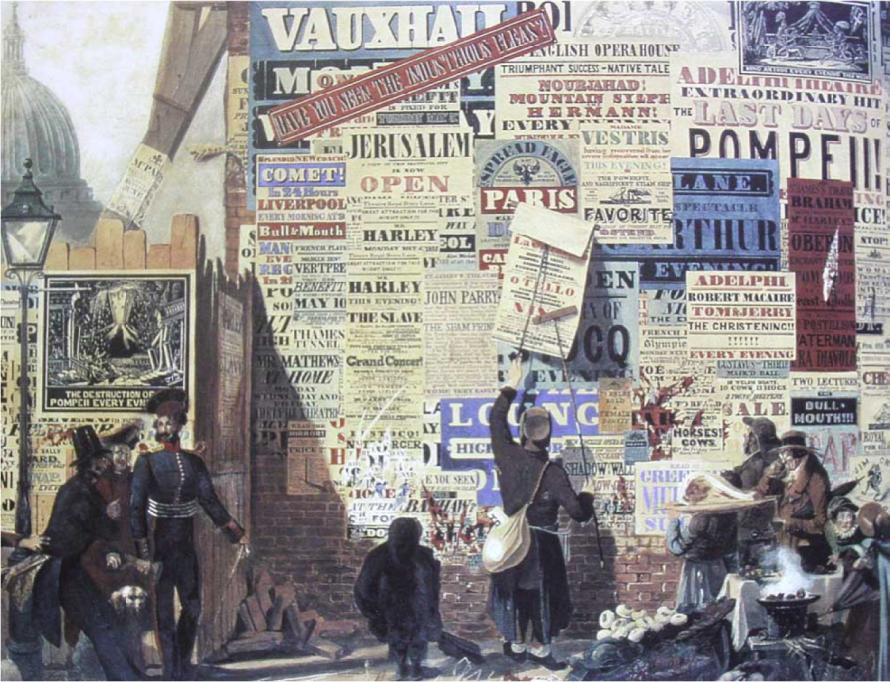
Advertising today takes a surprising number of forms. While print advertisements, television commercials and roadside billboards are still prevalent, advertising agencies are always looking for creative ways to sell products. Current advertising takes advantage of the viral networking possibilities of social media, the alternative quality of place-based or installation art, and the potential to exploit other media such as the television news programme or the article format (using infomercials and magazine supplements). One of the most important skills a critical consumer of advertising can have today is firstly the ability to recognize advertising wherever it may be hidden! Even then, advertising still has the power to seduce and persuade.
Topics:
IB Learner Profile: Principled
We act with integrity and honesty, with a strong sense of fairness and justice, and with respect for the dignity and rights of people everywhere. We take responsibility for our actions and their consequences.
How principled are you when it comes to the products you consume? Advertising and the mass media are powerfully persuasive and, in today’s digital world, positive messages are amplified and strengthened to the point where they are difficult to resist. As you study this section of the course, consider your own principles in light of the brands you purchase, the products you consume – and the messages you believe.
Lang and Lit Concept: Representation
How far that the texts we read represent the truth of our human experience has long been a contentious issue, and none more so than in the beauty industry and the mass media connected to it. Once you have studied the topic of representation in advertising, you will see how the lives of men and women, and the things that they desire and expect from life, are drastically changing across many parts of the world. But do these changes result in a change in the topics that men and women like to read about – and a shift in the way they like to see themselves reflected in texts – or will you find the same old issues of stereotyped representation appearing time and again in the texts you study?
Guiding Conceptual Questions:
- How important is the cultural or historical context to the production or reception of a text?
- How do conventions of texts evolve over time?
Readers, Writers, Texts 2: The Language of Persuasion

Have you ever experienced goosebumps whilst you were listening to someone speak? Chances are this response was the result of persuasive language. Persuasive language comes into all kinds of text, from presentations in school assemblies, to political pamphlets, to adverts persuading you to buy something you didn’t really need. In this section you will explore important aspects of persuasive language including propaganda, rhetoric and public speaking (another important application – advertising – is even more deeply enmeshed in our everyday lives and is covered in the next section).
Topics
IB Learner Profile: Thinker
We use critical and creative thinking skills to analyse and take responsible action on complex problems. We exercise initiative in making reasoned, ethical decisions.
sources of information, and the methods with which the ‘real world’ is presented to you through the mass media. You may have to swallow some of your assumptions about the purposes of those creating, programming and writing content for mainstream consumption. Being able to recognize when you are being covertly persuaded, for example, relies on you being media literate, and critically aware.
Lang and Lit Concept: Communication
Because speeches are inherently a communicative task, these sets of resources have been placed under the concept of communication. Concepts you’ll encounter in this section include how a writer facilitates communication through the style and structure of rhetoric. Writers often have a particular audience in mind, and discovering what assumptions have been made about this audience’s views might make communication with you – an unintended audience – more difficult. You might also question the way a reader and writer must co-operate for a text to be effective.
Conceptual Guiding Questions:
- In what ways can diverse texts share points of similarity?
- How does language use vary among text types and literary forms?
- How do texts offer insights and challenges?
Readers, Writers, Texts 3: The Media, Journalism and the Internet
“It is important to bear in mind that political campaigns are designed by the same people who sell toothpaste and cars.”
Noam Chomsky, Manufacturing Consent, 1979

Public opinion is a powerful force which can be used to decide who gets elected, how people should be educated, and how groups of people should be treated. The underlying concept on this page is how public opinion is managed through channels of mass communication, also known as the media. This unit also fulfils one of the IB Diploma wider aims, which is to promote media literacy: the understanding of how language is used as a tool to mould public opinion.
Topics
IB Learner Profile: Knowledgeable
We develop and use conceptual understanding, exploring knowledge across a range of disciplines. We engage with issues and ideas that have local and global significance.
How do you get your knowledge of the world? Which newspapers do you read, or news programmes do you watch, if any? How wide or narrow is the range of sources you use to keep abreast of current affairs? An IB Learner should strive to be knowledgable about ideas of global significance, and watching or reading the news from a variety of sources can help you broaden your horizons in this regard.
Lang and Lit Concept:
TBC
Guiding Conceptual Question:
- How do texts adhere to or deviate from conventions associated with genre or text type?
Time and Space 1: Changing English

One of the core concepts that you will return to time and time again in your study of IB English is that Language changes in relationship to time and space. This concept is what makes language so intriguing – and admittedly, challenging – to study. In this section you will be asked to consider language that is familiar to you and varieties of English that might be unfamiliar or even surprising. At any given point in time, language can vary significantly according to place and person, just as it has throughout history and across different cultures.
Topics:
- The Spread of English
- Varieties of English
- Proper English?
- Transforming Technologies
- The Future of English
IB Learner Profile: Inquirers
We nurture our curiosity, developing skills for inquiry and research. We know how to learn independently and with others. We learn with enthusiasm and sustain our love of learning throughout life.
Get yourself into good habits at the start of this section by trying to read beyond the articles provided here or by your teachers. You could begin by browsing the world famous Language Hat blog. Written and collated by retired journalist Steve Dodson, this is a repository of hundreds of articles about all things language-related, including how language is constantly changing and evolving. In the spirit of being an inquirer, why not choose an article that you enjoy and try leading part of a lesson using this as your starting point?
Lang and Lit Concepts: Culture
Language is one of the ways by which different cultures can be defined and distinguished from one another. During this section, you will visit different parts of the anglophone (English-speaking) world and learn about various cultures. As you learn, consider how the changes to English over time and space can tells us things about the different cultures in which the language lives.
Guiding Conceptual Question:
- How do conventions evolve over time?
Time and Space 2: Taboo
“Not one of them would sit down, or eat a bit of anything… On expressing my surprise at this, they were all taboo, as they said; which word has a very comprehensive meaning; but, in general, signifies that a thing is forbidden… When any thing is forbidden to be eaten, or made use of, they say, that it is taboo.”
Captain James Cook, 1777

The word ‘taboo’ derives from the Tongan word tabu meaning ‘set apart’ or ‘forbidden’, and was first used in 1777 by Captain James Cook after he observed the eating habits of the people of the South Pacific Islands. Taboo subjects in all societies tend to involve religion, sex, death and bodily functions; things that frighten us and make us uneasy. The first taboo word in Proto-European languages was supposedly ‘bear’ – an animal so ferocious and fierce that people were scared to call it by its name.
Taboos vary over time, and as they change, so do the words that are considered socially unacceptable. Several hundred years ago, the strongest taboos among English speakers were religious: you may remember hearing characters from Shakespeare shouting ‘Zounds!’ an expression that was vulgar as it was a shortened version of ‘God’s Wounds.’ This taboo has weakened over the 20th century, with words like ‘hell’ and ‘damn’ largely losing their offensiveness. Different societies have developed a multitude of words and expressions to deal with taboo subjects in a variety of ways, either to avoid mentioning a difficult subject at all or to deliberately use taboo words to shock, incense, hurt or offend.
Topics:
IB Learner Profile: Caring
We show empathy, compassion and respect. We have a commitment to service, and we act to make a positive difference in the lives of others and in the world around us.
IB Learners care about others, and care about the impact they have on others. They don’t stand aside when they see injustice or cruelty, and seek ways to actively improve the lives of others. The notion of ‘action’ is tied intimately to caring; so at some point while you investigate the following topics pause and draw up a resolution. This could be as small as altering the words you use to describe others, or something larger like delivering a presentation in an assembly about the way the language we use can be culturally sensitive.
Lang and Lit Concept: Perspective
The concept of perspective suggests that works and texts have a range of potential meanings. The potential can arise, for example, from authorial intent, reader bias, and from the time and place in which a work or text was written. You’ll discover that uses of language you might find offensive, from another perspective is inoffensive – and visa-versa. Part of being an IB student is learning to respectfully challenge received wisdom and the opinions of others, and to have your own preconceptions challenged in return.
Guiding Conceptual Question:
- To what extent do texts provide insights into different cultures?
Time and Space 3: Other Times, Other Places
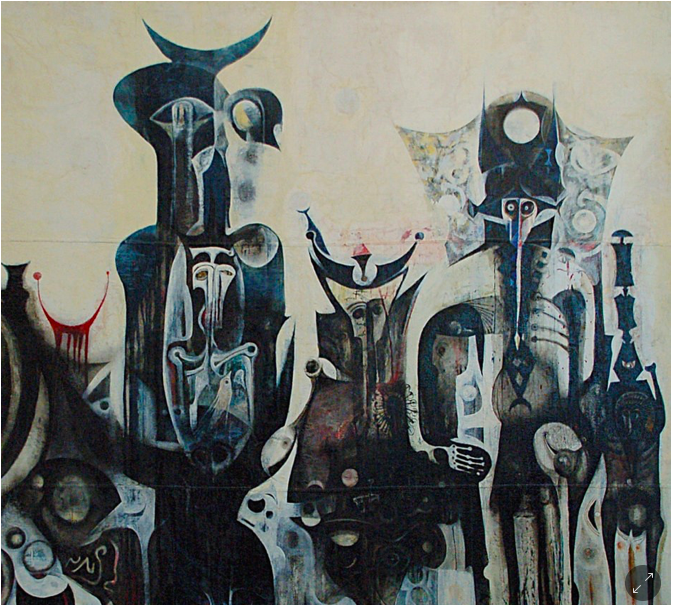
The idea that a reader comes to a text with culturally learned preconceptions is an understanding central to this section of the course. To a certain extent we are all ethnocentric – that is, we all struggle with the ingrained idea that our own way life is the natural or ‘right’ way to live. We then use those norms to make judgements about other cultures or ways of living. In this section you’ll study texts from and about people who live in other places or lived at other times and, hopefully, be able to recognise how the meaning of some texts rely on stereotypes or assumptions which may be misleading or untrue.
Topics:
- Faraway Places: Travel Writing
- Constructing Racial Stereotypes
- Stereotyping Poverty
- Visions of the Future
Learner Profile:
TBC
Lang and Lit Concept: Representation
“Representation refers to the relationship between texts and meanings. In any given text, whether literary or non-literary – however one makes that distinction – the relationship between form, structure, and meaning is a central concern. Perspectives differ on the extent to which language and literature does, can, or should represent reality.”
IB Lang and Lit Guide
Conceptual Guiding Question:
- How do texts reflect, represent or form a part of cultural practices?
Intertextuality 1: Making Connections
Intertextuality is a term coined by Julia Kristeva in 1966 explaining that there are two relationships going on whenever we read a text: there’s the relationship between us and the author (the horizontal access) and between the texts and other texts (the vertical axis). It’s the vertical axis that gives us our definition of intertextuality.

Literary texts possess meaning, and that is why readers extract meaning from them. The process of extracting meaning from texts is called interpretation. However, in contemporary literary theory such ideas have been radically changed. It is now believed that works of literature are built from systems, codes, and traditions established by previous works of literature and other art forms such as films and television, and culture in general. Therefore the act of reading one text, rather than the interpretation of one work, engages the reader in discovering a network of textual relations. Tracing those relations is the way of interpreting the text and discovering its meanings. Reading is like traveling around the world, a process of ‘touring between texts.’ In this section, you’ll learn how to conduct this process of ‘textual tourism.’
Topics:
- What is Intertextuality?
- Culture Mashing
- Alternative Advertising
- Literary Compare and Contrast (approaches to Paper 2)
IB Learner Profile: open-minded
We critically appreciate our own cultures and personal histories, as well as the values and traditions of others. We seek and evaluate a range of points of view, and we are willing to grow from the experience.
This part of the course could have been tailor-made by somebody with the value of open-minded in mind. In order to fully understand and appreciate the concept of Intertextuality, you will have to be open to all kinds of texts, and even open to the idea that, in order to understand and appreciate one text, you have to have read many other – possibly unrelated – texts first!
Lang and Lit Concept: Creativity
TBC
Guiding Conceptual Questions:
- How valid is the notion of a classic text?
- How do conventions and systems of reference evolve over time?
TOK Interlude: Words Words Words
“Don’t you see that the whole aim of Newspeak is to narrow the range of thought? In the end we shall make thoughtcrime literally impossible, because there will be no words in which to express it… Has it ever occurred to you, Winston, that by the year 2050, at the very latest, not a single human being will be alive who could understand such a conversation as we are having now?”
George Orwell, Nineteen Eighty-Four, (1948)

If we don’t have words for a concept or thing, then how can we conceive of a concept or thing? This is one of the key knowledge issues inherent to language, and needs thinking about in some detail. In this section you can explore ideas that relate closely to your Theory of Knowledge course, such as whether your knowledge is limited by the words you know, why what we call things matters, where the meaning of words resides, and whether you think in metaphors. In today’s political landscape, these ideas have arguably never been more relevant, as this article suggests.
Topics
- Beetles in a Box
- Garbage Language (Jargon)
- The Sapir-Whorf Hypothesis
- Metaphorically Speaking
- Is the English Language Sexist?
IB Learner Profile: Open-Minded
We critically appreciate our own cultures and personal histories, as well as the values and traditions of others. We seek and evaluate a range of points of view, and we are willing to grow from the experience.
The ideas in this section are intimately tied to work you will do in your Theory of Knowledge course, as language is one of the “ways of knowing,” a primary means of engaging with knowledge and understanding. As you explore language and words as a sign system, keep in mind your own spirit of open-mindedness – especially when the theories and suggestions in this section might seem a bit bewildering, esoteric or obscure.
Lang and Lit Concept: Creativity
The strange and esoteric nature of some of the concepts discussed in this section may require you to have an imaginative and creative response. When it all feels a bit much, remind yourself of the Lang and Lit guide’s definition of creativity: creativity highlights the importance of the reader being able to engage in an imaginative interaction with a text which generates a range of potential meanings from it.
Guiding Conceptual Questions:
- In what ways is meaning constructed, negotiated, expressed and interpreted?
- How are we affected by texts in various ways?
Drama Study: The Visit

The impoverished town of Guellen looks to multi-milliionaire Claire Zachanassian for financial salvation. When she offers them a million dollars if they kill Ill, a citizen of the town and her former lover, the townspeople initially refuse – but their resolve is worn down by the allure of wealth. Will they hold on to their moral idealism, or will the lure of money prove too much to resist?
The Visit, written in 1956, was Dürrenmatt’s third published work and is set approximately ten years after the end of the second world war. Famously, Switzerland remained neutral throughout the conflict, siding with neither Allied nor Axis forces. However, Switzerland had deported its Jewish citizens, refused to allow migrant Jews fleeing the Nazis to enter Switzerland, hosted Allied soldiers in prisoner of war camps, and accepted looted gold from German forces. In Dürrenmatt’s opinion, ‘neutrality’ was merely a euphemism for ‘complicity’. Therefore, his play is set in Guellen, a thinly veiled representation of Switzerland; a community forced to choose between moral convictions and material gain.
Drama Study: Top Girls

Since premiering in 1982 at the Royal Court Theatre London, and its successful Atlantic crossing to New York later that year, Top Girls has been regarded as a seminal play about the difficulties faced by women in the world of work and society at large. Mixing fantasy and reality, using a nonlinear construction, and featuring overlapping dialogue as women speak across, on top of, and around one another, Top Girls is both unique and difficult. Beginning with a surreal, imaginary dinner party scene that celebrates the promotion of Marlene to managing director of Top Girls Employment Agency, Churchill asks questions about what it takes for a woman to be successful, and to what extent 20th century Feminism has equaled out historical injustices for women.
Drama Study: Glengarry Glen Ross

Glengarry Glen Ross, by American playwright David Mamet, was first performed by the Royal National Theatre, in London, England, on September 21st 1983. Critic reviews were overwhelmingly positive and the production played in front of sold-out audiences. The play opens in a Chinese restaurant in Chicago. Three pairs of men sit in different booths, eating and talking. They all work for the same real estate sales office across the road. Bit by bit, we discover that there is a sales contest on: the winner of the first prize will receive a Cadillac; second prize a set of steak knives – all the rest of the salesmen will be fired! The second act relocates to the sales office the next morning: it has been ransacked and a set of important “leads” – information about potential buyers – has been stolen. A police detective is there to investigate the burglary and one by one the salesmen are interrogated. It seems that one of them is the prime suspect.
Drama Study: The Merchant of Venice

Merchant of Venice ranks with Hamlet as one of Shakespeare’s most frequently performed dramas. Written sometime between 1594 and 1598, the play is primarily based on a story in Il Pecorone, a collection of tales and anecdotes by the fourteenth-century Italian writer Giovanni Fiorentino.
In Venice, Antonio and Bassanio are friends. Bassanio is already in debt to the merchant, but he asks for an additional sum so that he can woo the wealthy and beautiful Portia in Belmont. Because most of his money is invested in three merchant vessels that have not returned from abroad, Antonio is unable to comply with his friend’s request. Bassanio turns to Shylock, who hates Antonio because he is a Christian and because he lends money without interest. Shylock agrees to lend Antonio 3,000 ducats for three months: if the loan is not repaid in time, he will demand a pound of the merchant’s flesh.
Drama Study: Pygmalion
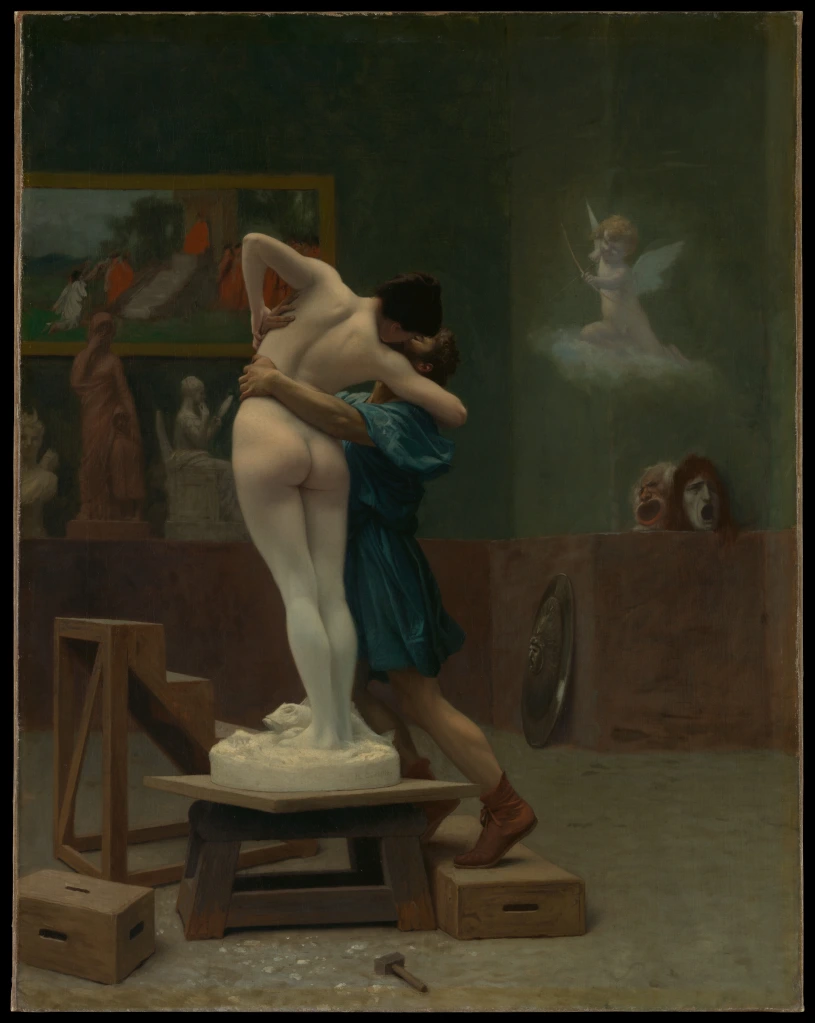
When George Bernard Shaw (1856–1950) was awarded the Nobel Prize in literature in 1925, he was praised for turning “his weapons against everything that he conceives of as prejudice.” This is clearly true of Pygmalion, which was premiered in German in Vienna in 1913.
The play is a modern interpretation of an ancient myth, the tale of Pygmalion and Galatea. In Ovid’s Metamorphoses, Pygmalion, an artist, falls in love with Galatea, a statue of an ideal woman that he created. Pygmalion is a man disgusted with real-life women, so chooses celibacy and the pursuit of an ideal woman whom he carves out of ivory. Wishing the statue were real, he makes a sacrifice to Venus, the goddess of love, who brings the statue to life. By the late Renaissance, poets and dramatists began to contemplate the thoughts and feelings of this woman, who woke full-grown in the arms of a lover. Shaw’s central character—the flower girl Liza Doolittle—expresses articulately how her transformation has made her feel, and he adds the additional twist that Liza turns on her “creator” in the end.
Prose Study: No Longer Human by Osamu Dazai

No Longer Human is the most famous of author Osamu Dezai’s (pen name of Shuji Tsushima, or 太宰治 in Japanese) few works. Written in 1948, it was first published in Japan under the name Disqualified From Being Human. Dezai’s book deals with themes of mental illness, depression, alienation, abuse, addiction, and suicide, seeming to uncover all of humanity’s darkest inclinations and tragedies. As a confessional work (in Japan, this type of autobiographical fiction is called an I-novel), the story echoes Dezai’s own unfortunate downward spiral. Yozo’s alcohol and morphine addictions, his failed relationships and attempted suicides all cleave close to Dezai’s real-life experiences.
Prose Study: A Thousand Years of Good Prayers by Yiyun Li

From the hustle and bustle of Beijing, to the bleak and barren steppes of Inner Mongolia, to a tiny restaurant in Chicago, Yiyun Li’s stories take readers to places strange and familiar, comfortable and bewildering. The debut collection of writer Yiyun Li (李翊雲 in Chinese), A Thousand Years of Good Prayer was published in 2005 and explores the lives, marriages, past loves, beliefs, and struggles of people caught between eastern and western cultures. Born in China during the Cultural Revolution, studying in Beijing, and moving to the United States to complete her degree in immunology, Yiyun Li is ideally placed to explore the effects of migration and political upheaval on individuals, parent-child relationships, and even on one’s own memories. Until recently a professor of creative writing at Princeton University, Li is the author of five novels, a memoir and two collections of short stories.
Prose Study: Life of Pi by Yann Martel

Faith, friendship, fiction, floating adrift at sea – all are themes explored in Life of Pi, a 2002 Man Booker Prize winning novel by Yann Martel. Even those who haven’t read the novel have probably heard of the story: its the tale of a devout Indian boy who becomes stranded in a lifeboat with a 450-pound Bengal tiger as his only companion. Pi must draw on all the knowledge gleaned from his childhood growing up in Pondicherry Zoo, as well as his inner reserves of faith and endurance, to survive this desperate ordeal. Thanks to huge critical acclaim, as well as a 2008 film adaptation directed by Ang Lee, the novel has sold over a million copies and regularly finds itself discussed in schools, bookclubs and wherever anybody loves fiction with a magical-realist twist.
Prose Study: Balzac and the Little Chinese Seamstress

The narrator, then 17, and his best friend Luo, who is 18, are sent to the Phoenix of the Sky mountain where the two urban youths are to be re-educated by poor village-dwelling peasants. They arrive streaked with mud from their journey, and immediately the villagers seize all their possessions, including a violin that they believe to be a toy. Then Luo smoothly breaks in with an offer to play a sonata called, ‘Mozart Is Thinking of Chairman Mao.’ The village headman smiles. So begins the story of Balzac and the Little Chinese Seamstress.
Dai Sijie’s own experience of being sent to live among peasants during the Cultural Revolution was the inspiration for Balzac and the Little Chinese Seamstress, which is semi-autobiographical. After returning home, he taught at a school in Chengdu before receiving a scholarship to study film in France. He left China in 1984. He directed several films before turning to writing. Balzac and the Little Chinese Seamstress was his first novel, winning several French literary awards, been adapted into a film by Dai himself, and been translated into 25 languages.
Prose Study: Waiting for the Barbarians
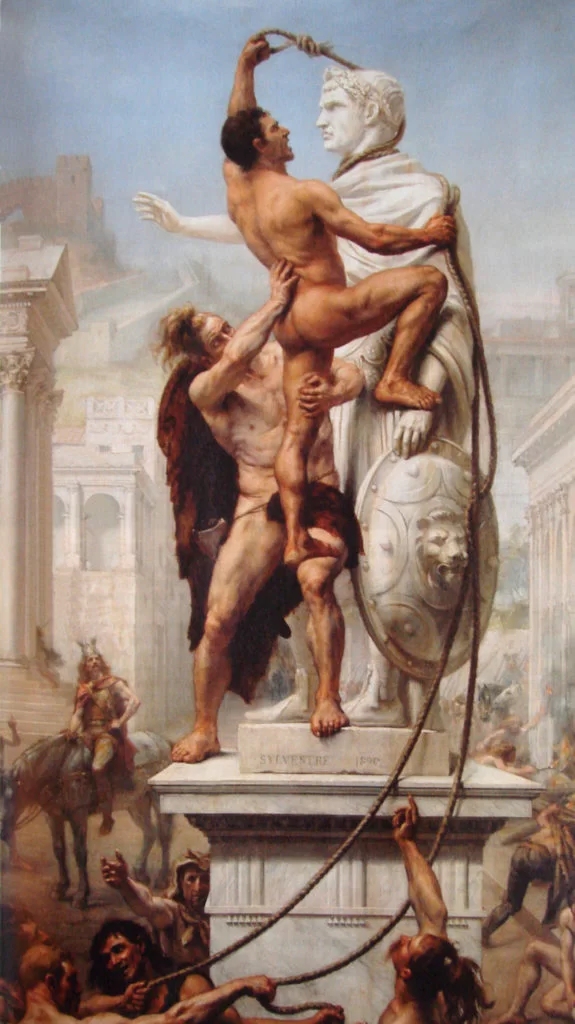
An unnamed magistrate is stationed at a frontier border town of an expanding empire. He’s been posted here for a long time and, despite how far away he is from the capital, he is happy to live out his ‘easy years’ in this remote area on the border of the empire; approaching sixty, he will retire soon and, apart from the occasional sheep raids and sporadic attacks, his posting is not at all dramatic. However, rumour is spreading about a possible barbarian attack by the indigenous peoples who live on the empire’s fringes. Displaced by the foreign settlers, are they now massing together to counter-attack?
The magistrate’s easy days are thrown into turmoil by the arrival of Colonel Joll. A ruthless army man, he’s been sent from the capital to discover the truth about the barbarian invasion. The magistrate welcomes Joll uneasily, and soon his suspicions about the officer’s mission are borne out. Joll ruthlessly adopts brutal torture tactics to discover the ‘truth’ from nomadic prisoners abducted from the desert lands around the settlement. The magistrate is repulsed by these techniques, and by the death of an elderly father who could not bear the sight of his daughter being tortured in front of him. Because of his compassion, he is reluctantly drawn into conflict with the empire he is meant to serve.
Prose Study: The Vegetarian

Han Kang’s The Vegetarian is one of the most internationally well-known Korean novels. It is not a story about a vegetarian per se; rather, it is a work that investigates what constitutes suffering. It tells the story of Yeong-hye as related through the eyes of three members of her family: her husband, her brother-in-law, and her sister In-hye. The story begins when Yeong-hye, seemingly from out of the blue, tells her husband she will no longer eat meat and proceeds to throw all the meat in their house away. However, in Korean society, social conformity is regarded as one of the most important social virtues. Yeong-hye’s refusal to eat meat therefore brings considerable embarrassment to her husband and father. So her decision backfires into a devastating conflict against an almost indomitable enemy: the reigning norms of the patriarchal Korean society of which she is also a member. When she determines to quit eating meat, all of society, including her own husband and family members, turn their backs against her and become her enemy.
Prose Study: The Elephant Vanishes
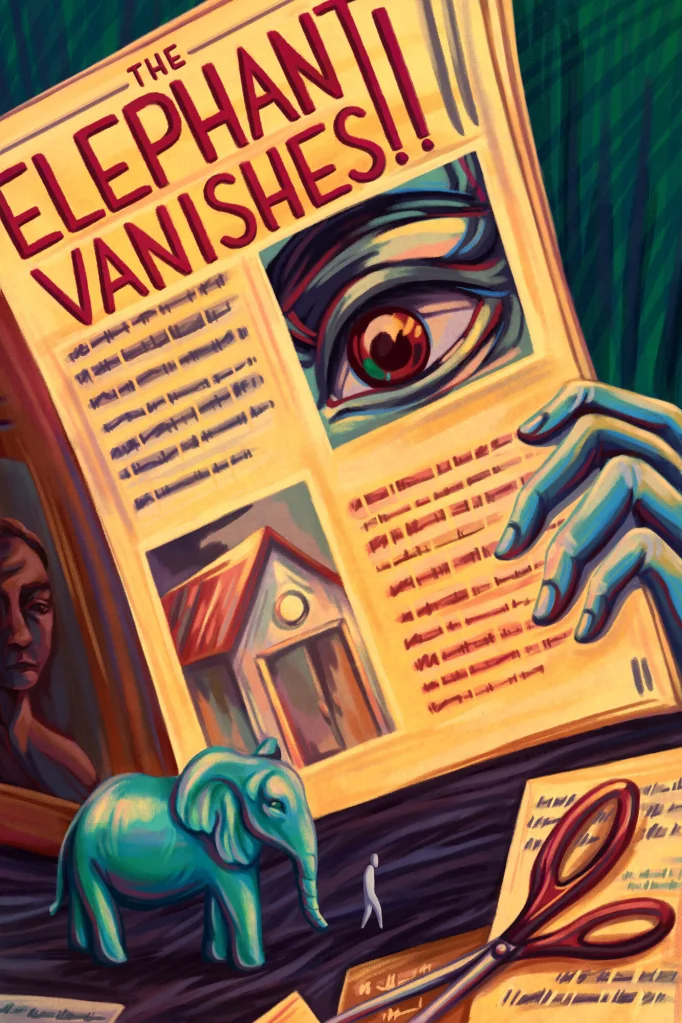
Haruki Murakami (in Japanese, 村上 春樹) was born in Kyoto in 1949 and moved to Tokyo to attend Waseda University. After college, Murakami opened a small jazz bar, which he and his wife ran for seven years. If you are ever in Tokyo you can still visit the Peter Cat today. Murakami’s love of music pervades his books. Many of his characters pass the time listening to music and even the title of a well-known novel is named after a Beatles song: Norwegian Wood.
His first novel, Hear the Wind Sing, won the Gunzou Literature Prize for budding writers in 1979. He followed this success with two sequels, Pinball, 1973 and A Wild Sheep Chase, which all together form “The Trilogy of the Rat.” Since then Murakami has written over a dozen novels, works of non-fiction and short story collections, including The Elephant Vanishes (originally published in 1993). His work has been translated into more than fifty languages, and nominated more than once for the Nobel Prize in Literature.
Prose Study: Broken April

The Charter of Paris for a New Europe (also known as the Paris Charter) was signed in 1990 by 34 participating nations – including every European country except Albania. This powerful novel reveals that Albania remained a closed country, haunted by the ghosts of the past and locked in a semi-medieval culture of blood and death. Broken April is one of several novels by Ismail Kadare that has been translated from Albanian into English and it’s simple style and power has lost nothing when read in translation.
The novel describes the way life is lived in the high mountain plateaus of the country, where people follow an ancient code of customary law called the Kanun that has been handed down from generation to generation. The code demands men to take the law into their own hands. Insults must be avenged, family honour must be upheld – and blood must be spilt.
Prose Study: The Bloody Chamber

Published in 1979, The Bloody Chamber and Other Stories retells classic fairy tales in a disturbing, blood-tinged, explicit way. Angela Carter revises Sleeping Beauty, for example, from an adult, twentieth-century perspective. You might think that fairy tales are the sorts of stories to read to children in bed to lull them to sleep – not these versions! Her renditions are intended not to comfort but to disturb and titillate.
In the title story of the collection, The Bloody Chamber, a young woman is traveling by train from Paris to her new home, a fairy tale castle seemingly out of legend. Her husband is asleep near her, and she, a young pianist, lies sleepless, not knowing what to expect of her married life. Her husband, a marquis who is much older than she and much richer than she, had three wives before her— an opera diva, an artist’s model, and a countess— all of whom died under mysterious circumstances. On arrival at the castle, her husband tells her she can go anywhere – except into a strange room that he always keeps locked.
Prose Study: Border Town

This short novel, written in 1934 by Shen Congwen (in Chinese 沈从文), opens a window onto life in China before the communist revolution of 1945 – 1952. The setting is Fenghuang County, an idyllic rural area in the far west of Hunan Province.
Here Cuicui lives with her grandfather, who operates a ferry boat across a river outside the small provincial town of Chadong. The boat connects the two ‘worlds’ of Shen’s story: his idealised countryside scene is tucked away in a forgotten part of the world, seemingly locked outside of time; but the town is a gateway to China’s interior lands and forces of modernity are slowly creeping towards their sleepy rural paradise.
Prose Non-Fiction: Nothing to Envy

The DPRK (Democratic People’s Republic of Korea, commonly called North Korea) is notoriously hostile toward journalists. Throughout the 1990s and 2000s, outsiders, when they were allowed to visit at all, were shepherded to the showcase capital of Pyongyang, sheltered from the poverty and famine found in most of the rest of the country. Barbara Demick is an American reporter who worked for the Los Angeles Times and was bureau chief in South Korea. She interviewed over 100 North Korean survivors and defectors, choosing six stories from people who lived in the industrial city of Chongjin to represent the experiences of the ordinary people of the country.
The timeline of Nothing to Envy charts the lead-up to the devastating North Korean famine (euphemistically called The Arduous March in the DPRK), a period of mass starvation that lasted from 1994 – 1999 in which between 2 and 3.5 million North Koreans lost their lives. As money and jobs dried up in the years before the famine, people started to fear the worst. Even the government regime, so reluctant to accept anything might be wrong in their workers’ paradise, instigated a propaganda campaign exhorting people to eat less food. Not that the people had much choice. By the mid-1990s, the countryside was stripped bare and mothers resorted to making soups out of grass, and porridge out of tree bark, rice husk and sawdust.
Prose Non-Fiction: Fun Home

Subtitled ‘A Family Tragicomic’, Fun Home is a graphic novel recounting the story of Alison Bechdel coming out as a lesbian. Told in non-chronological flashbacks to her childhood in Beech Creek, a small rural town tucked into the Allegheny Mountains, Pennsylvania, the story is also a way of Bechdel making sense of her father’s death by comparing his life to her own. Throughout the novel, Bechdel works through her difficult childhood relationship with her father, Bruce, and her gradual discovery that he, too, harboured secrets from Bechdel, her mother and siblings. Bechdel remembers her father’s impatience, how quick he was to lash out in punishment, and how insecure he felt about his appearance. Although to the rest of the community, the Bechdel household represented the ideal ‘nuclear family’, her father’s secrets would come to undermine everything Bechdel thought she believed and risked making her childhood memories nothing more than a sham.
Poetry Study: Charlotte Mew

On a modest London street in Bloomsbury in 1913 called Devonshire Street stood a tiny independent bookshop by the name of The Poetry Bookshop. It’s proprietor was Harold Munro, and he ran this friendly neighbourhood store until 1926. As well as selling books of poetry, Harold also published – and it’s thanks to him that Charlotte Mew, a sometimes shy-and-silent young woman from Bloomsbury, found her audience. Invited to the shop by Harold’s assistant Alida Klemantaski, while Mew had never sought fame, she was quickly caught up in the whirl of poetic activity – and agreed to the publication of The Farmer’s Bride in 1916.
Despite the moderate success of The Farmer’s Bride, during her lifetime (1869 – 1928) Mew amassed no large following. However, in the last few decades there has been a renewed interest in Mew’s prose and poetry and a re-evaluation of her contribution to literature. In 2021 a new biography of Charlotte Mew, This Rare Spirit by Julia Copus, was released and it seems that Charlotte Mew is belatedly having her moment in the spotlight. I hope that the poems you read on this course will introduce you to her distinctive voice and that you will enjoy reading poems by a person Virginia Woolf once called “the greatest living poet.”
Poetry Study: John Keats
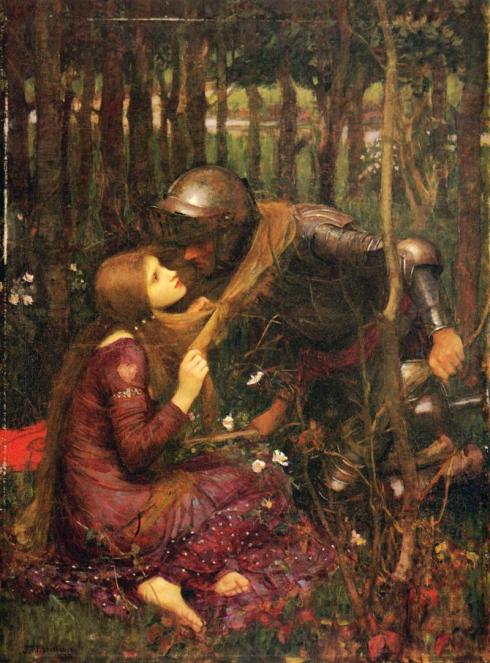
For many, John Keats fits the quintessential image of a tortured-artistic-genius. Born on 31st October 1795 as the eldest son of Thomas and Frances Keats, his origins were working class. His father was a stable-keeper and it is rumoured the poet might have been born in the stables of the public house in Smithfields, London, where his father worked (and which was owned by his maternal grandfather). His early years and family life were happy and comfortable: the poet grew up with brothers George and Thomas and sister Fanny, who was born in 1803. Despite their working-class background the family were comfortable enough to let John attend a small village school in Enfield. Far from the studious, bookish and sensitive child we might expect, John’s classmates reported that he was robust and healthy – and he particularly enjoyed fighting!
Poetry Study: The World’s Wife

First published in 1999, this collection of poems by Carol Ann Duffy presents stories, myths, and fairy tales popular in western culture. But this time we hear them from the point of view of women; the unsung, silenced or marginalised women close to famous men. Traditionally these women may have had no names; some of the poems’ titles follow a pattern (‘Mrs Midas’, ‘Mrs Darwin’, ‘Pygmalion’s Wife’ and so on) which bitterly suggests that women have been so neglected by history and culture the only way they can be identified is by association with their husbands’ name.